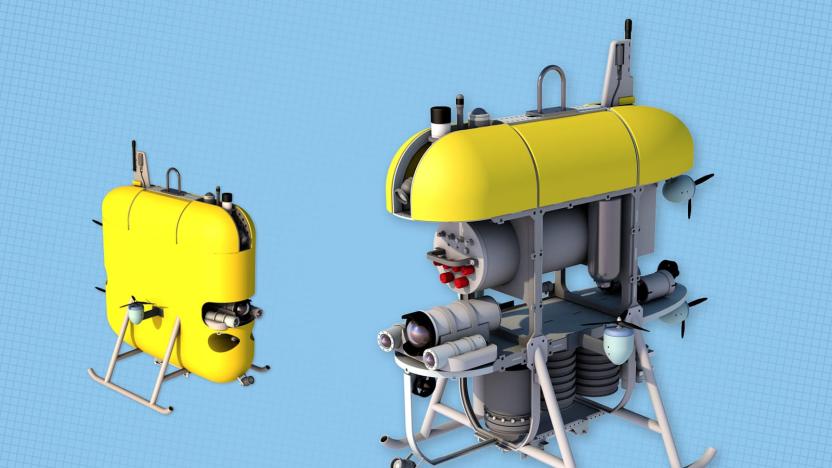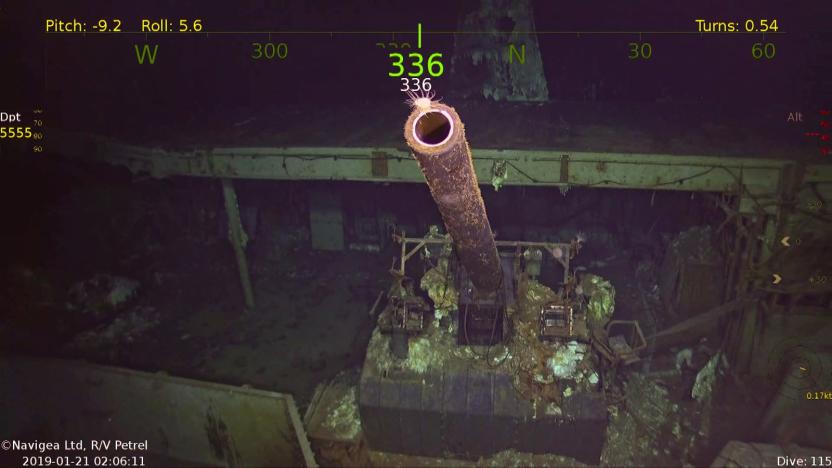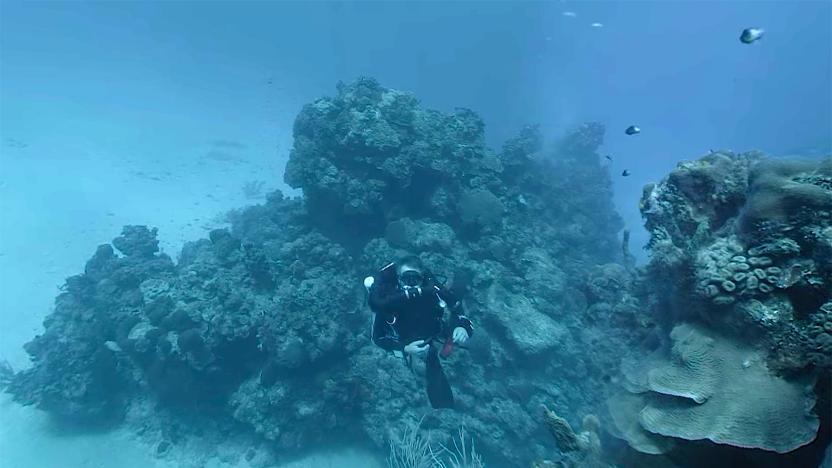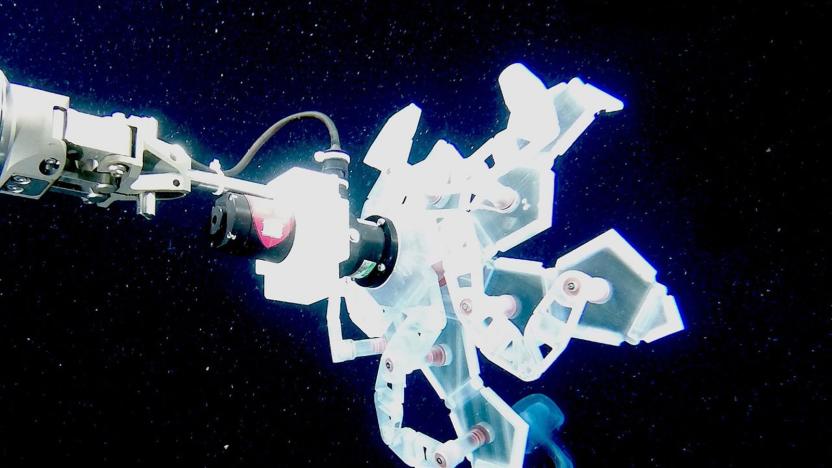deepsea
Latest

Sneaky deep sea robot will take pics of fish without spooking them
Robots typically aren't good choices for studying deep sea animals like jellyfish -- not when their light, noise and movement can scare away those creatures. Researchers at Woods Hole Oceanographic Institution may have a far less intrusive option, though. Their planned Mesobot observer is designed to move as quietly as possible while collecting data about aquatic life. The four-foot-tall robot moves using six large but low-power thrusters that won't cause a stir, and its LED lights can switch to red (which many deep sea species can't see). A two-day running time should also minimize attention-getting trips to the surface.

Sonar drone discovers long-lost WWII aircraft carrier USS Hornet
The late Paul Allen's research vessel, the Petrel, has found another historic warship at the bottom of the ocean. In the wake of an initial discovery in late January, the expedition crew has confirmed that it found the USS Hornet, an aircraft carrier that played a pivotal role in WWII through moments like the Doolittle Raid on Japan and the pivotal Battle of Midway. It was considered lost when it sank at the Battle of Santa Cruz in October 1943, but modern technology spotted it nearly 17,500 feet below the surface of the South Pacific Ocean, near the Solomon Islands.

Hydrus VR camera brings immersive 8K video to the deep sea
Don't be surprised if you soon see VR video from some of the darker corners of the ocean. Marine Imaging Technologies has launched a new camera, the Hydrus VR, that promises 360-degree 8K video (higher-resolution than many current headsets) at depths of up to 984 feet, even in lighting conditions as dim as 0.004 lux. The 10-camera array takes advantage of new ultra-sensitive Sony sensors to capture video at up to ISO 409,600 -- the result will be noisy, but might be the key to spotting an elusive fish hiding in a cave.

Harvard's robot arm can grab squishy sea animals without hurting them
As you might imagine, you can't just grab extra-soft sea creatures like jellyfish or octopuses when you want to study them. Not if you want them to remain intact, anyway. Thankfully, researchers at Harvard's Wyss Institute have a far more delicate solution. They've created a robot arm (the RAD sampler) whose petal-like fingers can quickly form a ball shape around an animal, capturing it without risking any harm. It's simpler than it looks -- it uses just a single motor to drive the entire jointed structure, so it's easy to control and easier still to repair if something breaks.

China's acoustic probe heard sound from the Mariana Trench
A team of Chinese scientists have completed the country's first acoustic test in the Mariana Trench, and the results could lead to a breakthrough in understanding how sound is transmitted in the deepest parts of the ocean. The researchers from Northwestern Polytechnical University in Shanxi province dropped and retrieved an acoustic probe into a valley at the southern end of the trench, which is about 11 kilometers (approximately 6.83 miles) under the surface.

ICYMI: 3D-printed instrument, Humanoid diver and more
#fivemin-widget-blogsmith-image-99267{display:none;} .cke_show_borders #fivemin-widget-blogsmith-image-99267, #postcontentcontainer #fivemin-widget-blogsmith-image-99267{width:570px;display:block;} try{document.getElementById("fivemin-widget-blogsmith-image-99267").style.display="none";}catch(e){}Today on In Case You Missed It: Free 3D plans to create your own plastic violin should make the instrument a bit easier to take up; Stanford roboticists created a remotely-operated humanoid diver that can be haptically controlled from afar by its pilots, meaning they can feel what the diver does. And a table tennis projector can coach you on improving your lousy game, so nothing like this ever happens to you. Sick of those updates popping up during important moments? It can't be as bad as being live on-air. As always, please share any great tech or science videos you find by using the #ICYMI hashtag on Twitter for @mskerryd.

Deep Flight Super Falcon winged submarine readies deep sea exploration in San Francisco
Inventor Graham Hawkes has been building deep sea exploration vessels for about 20 years. His newest submarine -- called the Deep Flight Super Falcon -- has a set of wings with a span of 10 feet, giving the 20 foot vessel a distinctly bird-like appearance. Hawkes has been working on the Falcon for several years, and it's just now ready to make its first deep sea journey. The battery-powered vessel is twenty feet long, can carry two people, and cruise depths of up to 1,500 feet at a speed of about 7 miles per hour. The winged vessel is extremely agile because of its animal-like shape, and researchers at Farallones National Marine Sanctuary are optimistic about it potential for studying and following exotic, mysterious sea creatures such as super sharks and the ever-elusive giant squid. The Super Falcon is set to fly around Monterey Bay from June 19th to July 17th, and will be on display to the public when not in use. Check out the video of the Falcon after the break.


